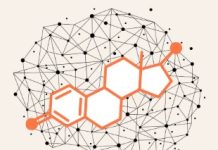There are significant funding gaps between Indigenous students and non-Indigenous students within Ontario. Indigenous and Northern Affairs Canada (INAC) is responsible for providing education to Indigenous students however, it is outside of federal jurisdiction to deliver education as under the Canadian Constitution education is within individual provincial and territorial jurisdiction. Thus, as INAC is a Federal entity it is required to negotiate with the Ontario Ministry of Education for the delivery of education and makes transfer payments for the education of Indigenous elementary and secondary school students who attend provincial schools. If education is being delivered within a First Nations community it must still meet the requirements of the provincial curriculum. There are clear funding gaps between Indigenous students and non-Indigenous students as non-Indigenous students enrolled in provincial schools are associated with higher funding amounts per student than Indigenous students in First Nations community schools (Angus, 2015; Battiste, 2013).
There are also significant educational gaps and within educational contexts it is very common to hear statements that claim Indigenous students are several grade levels behind their non-Indigenous peers. Indigenous students themselves are quite familiar as became apparent during a Students Success Research Consortium research project that focuses on the educational experiences of youth from Six Nations of the Grand River Territory. Youth and community members spoke openly about how by grade three or four children enrolled in Six Nations community schools were seen to be behind by up to two grade levels and that disengagement with school could be seen as early as grade one and grade two.
When you consider funding and educational achievement gaps that have been identified in the research again and again a particular picture starts to emerge about how well education systems, as well as provincial and federal ministries are serving the needs of Indigenous youth but strangely that is not the picture that is most often painted. Instead the picture that tends to emerge and become ‘common knowledge’ is a picture that applies a pathologizing lens to the students themselves. Indigenous students and Indigenous teachers are often portrayed in this picture as being the problem. This is the picture that is painted for Indigenous students in the classroom and in the media until it becomes internalized and can act in very damaging ways as self-fulfilling prophecy. The question that we should be asking is not what is wrong with Indigenous students but what is wrong with the systems that are failing to serve those students.
We should be questioning how comparisons between Indigenous students and non-Indigenous students are being made to develop this ‘common knowledge’ that deflect attention from the system to the students, teachers, parents and First Nations communities. Are such comparisons even appropriate when there are differing levels of resources, funding, and access to programming beyond the basic Ontario curriculum between the two groups? Are considerations made for Indigenous students’ first languages and whether or not studying in English or French constitutes studying in a second language? What about considerations for the basic needs of students such a proper and adequate place to attend school? Shannen Koostachin of Attawapiskat First Nation never attended school in a proper school building in her community and had to leave her community at the age of thirteen to access high school education. She campaigned to have a proper school built in her community. She was killed in a car accident outside her community before her dream could be realized (Angus, 2015).
Indigenous children and youth within Canada are still being denied basic human rights, which include access to quality education. It is much easier to deflect attention from this reality than to deal with the difficult questions of how Canada will act to address the intergenerational legacy of the damage inflicted by residential schools and how it will uphold its responsibility to provide basic human rights in Indigenous children and youth. The findings of the Truth and Reconciliation Commission of Canada (2015a; 2015b) state that education is one of the paths that could lead to reconciliation. As all people residing in Canada, regardless of ancestry, are treaty people an important question to ask is how will we move forward to paint a new picture and face difficult truths that will help us grow and learn together?
Authors: Dawn Zinga and Sandra Styres
Angus, C. (2015). Children of the broken treaty: Canada’s lost promise and one girl’s dream. Regina, Saskatchewan: University of Regina Press.
Battiste, M. (2013). Decolonizing education: Nourishing the learning spirit. Saskatoon, SK: Purich Publishing.
The Truth and Reconciliation Commission of Canada (2015a). Honouring the truth, reconciling for the future: The Truth and Reconciliation Commission of Canada final report. Accessed online at www.trc.ca.
The Truth and Reconciliation Commission of Canada (2015b). Truth and Reconciliation Commission of Canada: Calls to action. Accessed online at www.trc.ca.
Dawn Zinga
Associate Professor and Chair
Department of Child and Youth Studies
Brock University
dzinga@brocku.ca
https://brocku.ca/social-sciences/departments-and-centres/child-and-youth-studies
Sandra Styres
Adjunct Associate Professor
Department of Child and Youth Studies
Brock University
Assistant Professor of Language, Literacy and
Curriculum in Aboriginal Education
Department of Curriculum, Teaching & Learning
Chair of the Indigenous Education Network
OISE/University of Toronto
sandra.styres@utoronto.ca
http://www.oise.utoronto.ca/mtcommunity/Faculty_Staff/Profiles/Sandra_Styres.html










